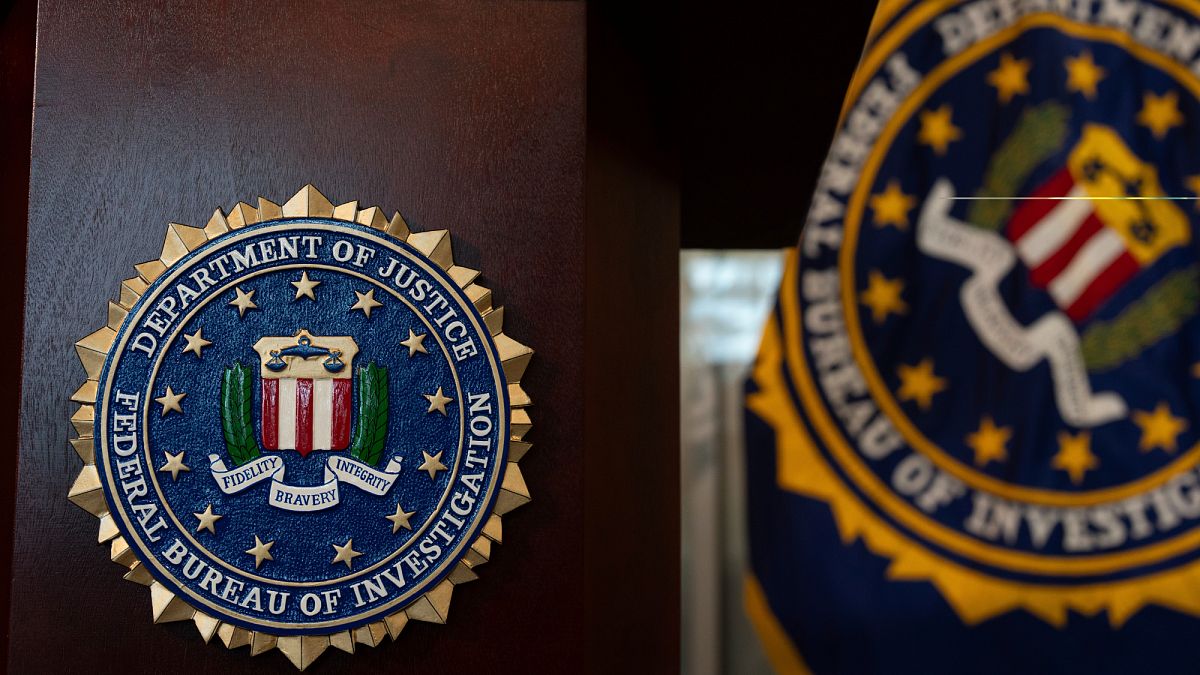Nevada
Nevada botanist is creating state’s first complete plant list – The Nevada Independent

This story is being republished as part of a content-sharing agreement with the Sierra Nevada Ally. Read the original version here.
Before the inclement winter weather freezes them, during the warm days of spring or early summer, or the cool evenings of early fall, Arnold “Jerry” Tiehm, 70, digs up plants and quickly presses them in past-read newspaper sheets, so they do not wilt.
Equipped with his hiking boots, eyeglasses, notebook, hammer, plant press and pen to take notes on the places and plants, he has been collecting and pressing plants for over 49 years. He has helped create a collection of more than 115,000 specimens at UNR over two-thirds of which are from Nevada.
Now, as the curator of herbarium for the Museum of Natural History at UNR, Tiehm is using all of his past knowledge and field work to help collect and document every plant species in Nevada, linking each record to a physical specimen, the place where it was found, and every Nevada county in which that plant occurs.
In doing so, Tiehm not only is demonstrating the diversity of plants and habitats in Nevada – even finding new plant species – but he is also helping create the first comprehensive and corrected list of plant species in the state.
“I grew up in Nevada, a place that botanically has always sort of been the last frontier in North America,” Tiehm said. “I began in the late ’70s and early ’80s by really looking at plants and I started turning up things that were new to science; and that is pretty exciting, when you can find something that nobody’s ever seen before. It has been an obsession, just to get to every place I can, and try to find all the plants within the state.”
Project background
To catalog the plants of Nevada, Tiehm, who is one of the founding members and the president of the Nevada Native Plant Society, has been exploring the state from border to border. He is currently being assisted by Jan Nachlinger, a member of the society.
Traveling by car, on foot, or even horseback, his approach is clear: he is trying to get to places where other collectors do not usually get to, those hard to reach, or to go to the same spots that someone already visited but at different times of the year.
Tiehm still finds previously undiscovered plants in Nevada. Because of his efforts, seven species of plants have been named after him, including Tiehm’s buckwheat. He wrote the book “Nevada Vascular Plant Types and Their Collectors.” His goal is to contribute new discoveries and corrections to the plant collection at the museum at UNR, which now includes over 1,500 taxa (species and subspecies or varieties).
New discoveries
In planning a field expedition, Tiehm and Nachlinger take into account a number of things, but there is not a clear pattern to where they go.
“Sometimes we are trying to re-find a plant that was collected without fruit or flowers and we are not sure as to its identity,” Tiehm said. “Other times we pay attention to precipitation, especially in the lower elevation areas. The sandy deserts can be knee-deep in wildflowers during wet years and totally devoid of flowers in a dry year … Sometimes we just follow our noses. We will go to the foothills of a mountain and just poke around into canyons and see what we can find.”
Once in the collecting location, sometimes on hands and knees, they examine the area and plants that they recognize with ease. Sometimes, they find species they were not looking for nor were they expecting to see.
In September, during their last collecting trip of this year, they made new discoveries: two plants that were not known to be in Nevada. One was Muhlenbergia depauperata, a small annual grass known to reside in northern Mexico, Texas, New Mexico, Colorado, Arizona, and Utah; and the second one was Hibiscus trionum, an introduced species from Southern Europe, North Africa and Asia that has been found in most other U.S. states.
And that is how many discoveries are made.
“We just happened to be in the right spot at the right moment,” Tiehm said. “Then, I take the plants, I press them and dry them and bring them back to the herbarium so we have a permanent record of it.”
Back at the herbarium, Tiehm identifies, labels and glues them on thick sheets of white paper that will later fill the tens of cabinets in the Museum at UNR. He also sends specimens to other herbaria in Nevada and beyond.
He has also been revisiting literature and previous checklists and visiting already documented sites because mistakes in labeling and identifications have been made in the past by other collectors. He will include in this checklist an “excluded” list where these mistakes will be pointed out so that the errors are not perpetuated.
In this almost 50-year project, Tiehm has covered most of the state, except for the Nevada National Security Site in southeastern Nye County.

Why does this matter? What is next?
Almost five decades into the work, Tiehm still has the energy and enthusiasm to continue his project.
“I am going to continue doing this until I get so old and decrepit that I can’t go out in the field anymore,” Tiehm said. “There are already places I can’t get to now that I could get to earlier, but I still do it, I just get out and go. I gotta keep moving.”
He aims to have the checklist published within a year. An online database of UNR’s plant collection, including many specimens that Tiehm has collected, can be found on the Intermountain Region Herbarium Network website.
In the end, why does this checklist matter? According to Tiehm, it is important to collect and preserve plant samples the “old-fashioned way,” rather than modern methods such as DNA analysis only. One reason is that climate change is and will continue to affect plant populations in ways we don’t yet understand.
“We don’t know if some of these plants may become extinct and we would never have known they were here,” Tiehm said.
Having the actual plant samples is useful for students and researchers at UNR and outside. For example, the director of the Museum of Natural History at UNR, Elizabeth Leger, Ph.D., did a study to see if “warming trends in the Great Basin have affected plant size by measuring specimens preserved on herbarium sheets collected between 1893 and 2011,” according to the paper. If UNR did not have this collection of plants, this and many other research questions could not be answered.
“Sometimes we do not truly know how these collections of animals and plants will be used by researchers and what questions are going to be asked in the future, but we keep the collections in good condition so they can ask those questions,” said Cynthia Scholl, education coordinator for the museum.
The idea is then to keep as much information as possible to facilitate the resolution to those possible future queries: to learn about changes in shapes and body sizes; about past, present, or new diseases; about the interaction with plants and with ecosystems; and so on.
The possibilities are infinite.
Vanesa de la Cruz Pavas is a science and environmental journalist from Medellín, Colombia, who is currently studying her master’s program in Media Innovation at the University of Nevada, Reno. Her emphasis is on science, the environment, health and gender issues; and she is now the graduate assistant for the Hitchcock Project for Visualizing Science.

Nevada
Update: 2 outages in Northern Nevada leave 246 customers in dark

RENO, Nev. (KOLO) – Updated at 5:10 p.m.: All outages are planned outages now, according to NV Energy’s outage center.
There are 2 outages in Northern Nevada affecting 246 customers.
ORIGINAL ARTICLE: There are three power outages in Northern Nevada affecting 247 customers, according to NV Energy’s outage center. All but one were planned outages.
The 4:30 p.m. Saturday, May 31, check showed 131 customers in Carson City were without power; 115 customers in Churchill County; and one customer in Washoe County.
The corresponding zip codes for the outages were 89701, 89406, and 89509.
Copyright 2025 KOLO. All rights reserved.
Nevada
‘Banana Ball’ a family reunion for the Reids

RENO, Nev. (KOLO) – Game 2 of Banana Ball Friday night brought another sellout crowd to Reno’s Greater Nevada Field.
But for a couple dozen people it meant more than taking in an entertaining baseball exhibition.
Jon Reid, who pitches for the Texas Tailgaters, has the 775 in his blood.
“To me it means the world and having (family) come out,” Jon said.
The relief pitcher is in town for the 2025 Banana Ball World Tour. Kevin Reid, Jon’s dad, has deep roots in the area with family who lives in Reno, Sparks, Carson City, and Douglas County.
“It’s super fun just to see (Jon) still out there enjoying the game and the game that he loves,” said Kevin Reid.
Jon has been coming to Northern Nevada for years on an annual basis to visit. He’s now based out of Savannah, Georgia.
Jon has spots he has to hit when he’s in Reno.
“For sure In-N-Out, Lake Tahoe, and then Heavenly. In the snow? You can’t beat it,” Jon said.
Trips to the ski resort will have to wait. In the meantime dozens of family members made the trip to Greater Nevada Field to see Jon play Friday night.
His mom, Stacey, and brother, Zachary, got to see a different side of Jon.
“To see him dancing has been an enjoyment,” Stacey said. “Yesterday was fun to see him out there shaking a little bit because we never see it at home.”
Zachary likes seeing his brother continuing to live his dream.
“He’s a professional baseball player who gets paid to dance and do TikToks on the side. It’s nuts. I grew up going to all his games and all of our summer vacations were worked around baseball,” Zachary said.
In the 8th inning of Friday’s game Jon worked around some traffic on the base paths which kept the Tailgaters in the game. He finished his outing with a point to his family in Section 111.
“For me to put a smile on a kid’s face I think that’s all my mom ever wanted so that’s what I’m trying to do,” Jon said.
Copyright 2025 KOLO. All rights reserved.
Nevada
Nevada County Recognizes Mental Health Awareness Month

In recognition of May as Mental Health Awareness Month, the Nevada County Board of Supervisors passed a proclamation this month making May Mental Health Awareness Month in Nevada County and highlighting the importance of promoting mental health through prevention, education and support for key services.
“Each year during Mental Health Awareness Month we want to remind our friends and neighbors how important it is to take care of our mental health!” said Nevada County Behavioral Health Director Phebe Bell. “Support your resilience through healthy eating, exercise, enough sleep and connections with friends and loved ones. But also know that we all have rough patches in life, and it is OK to reach out for help when you are struggling. Resources and supports are here for you!”
During the month of May, Nevada County Behavioral Health and Public Health held a number of outreach events and trainings, including health fairs at local schools and Know the Signs suicide prevention trainings. On Monday, May 5, Public Health partnered with the Grass Valley Library on a suicide prevention and mental health training for library patrons in partnership with the library’s Adulting series. Outreach events and trainings will continue into June with mental health resources and information available at the Nevada County Health & Safety Fair on June 7 and the Pride Family Picnic on June 8.
“In rural areas like Nevada County, mental health care and support are not always as easy to access, but they are just as essential as anywhere else,” said Nevada County Health Officer Dr. Sherilynn Cooke. “That’s why we’re committed to ensuring every resident—whether in town or out in the far reaches of the county—has the resources they need. Mental Health Awareness Month is an opportunity to raise awareness about these resources, making sure people know where to turn when they or someone they care about needs support.”
As Mental Health Awareness Month comes to a close, Nevada County Behavioral Health and Public Health remind residents that mental health resources are available all year.
In May of last year, Nevada County Behavioral Health and Public Health launched the Mental Health Matters Nevada County campaign to increase the public’s awareness, understanding, and access to mental health and suicide prevention resources. The central feature of the campaign is a website, www.MentalHealthMattersNC.com, where residents can go to learn about important mental health and suicide prevention resources.
Since launching on May 1 of last year, the site has had 70,193 unique site visitors and 162,300 total site visits.
“We are excited about the response to the Mental Health Matters Nevada County campaign and website,” said Corinne Amezcua, Suicide Prevention Coordinator at Nevada County Public Health. “We want to make it as easy as possible for people to get the mental health support they need—whether it is for themselves, a loved one or just to be more aware of how they can support mental health for their neighbors.”
Residents can learn more about mental health resources in Nevada County by visiting www.MentalHealthMattersNC.com, including information, outreach materials, and resources about mental health and suicide prevention.
-

 News1 week ago
News1 week agoRead the Full ‘Make America Healthy Again’ Report
-

 Technology1 week ago
Technology1 week agoNow you can watch the Internet Archive preserve documents in real time
-

 Technology1 week ago
Technology1 week agoDiscord might use AI to help you catch up on conversations
-

 Science1 week ago
Science1 week agoTrump Has Cut Science Funding to Its Lowest Level in Decades
-

 World1 week ago
World1 week agoNeo-Nazi cult leader extradited to US for plot to kill Jewish children
-
Movie Reviews1 week ago
Movie Review: 'Pee-wee as Himself' unmasks Paul Reubens
-

 Movie Reviews1 week ago
Movie Reviews1 week agoMovie review: 'Dogma' re-release highlights thoughtful script – UPI.com
-

 Business1 week ago
Business1 week agoPlastic Spoons, Umbrellas, Violins: A Guide to What Americans Buy From China















